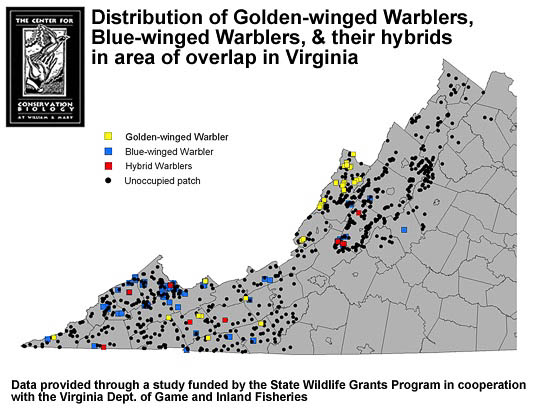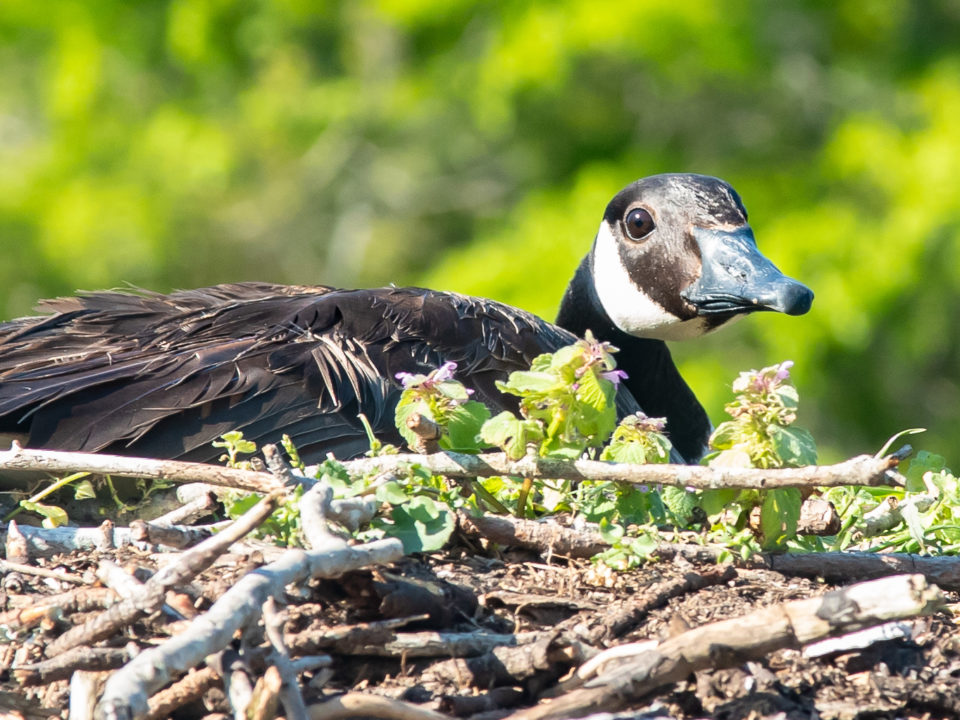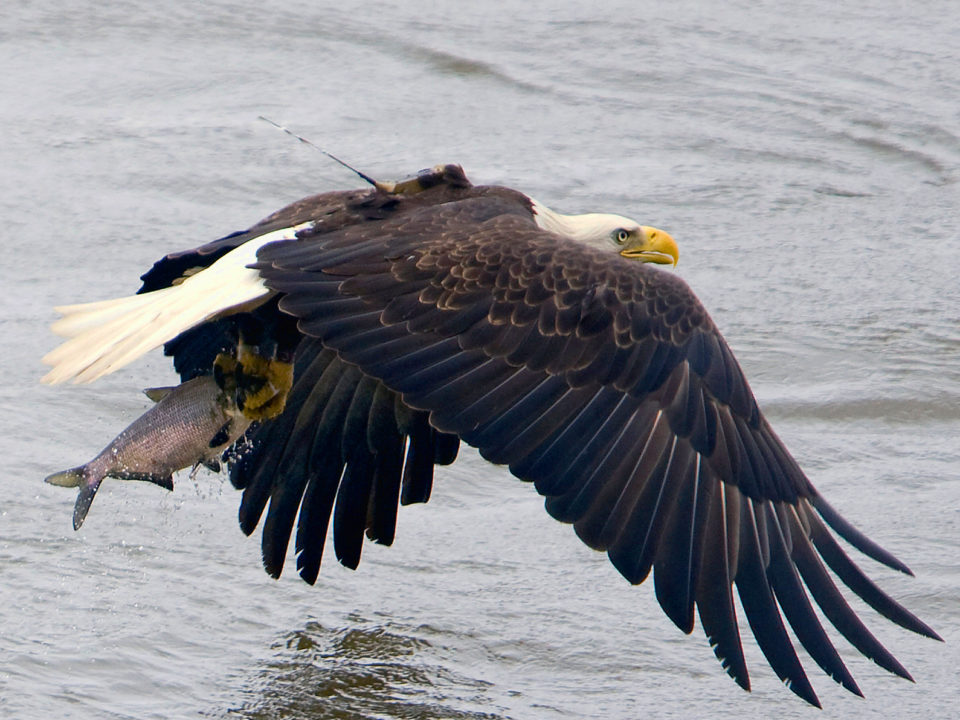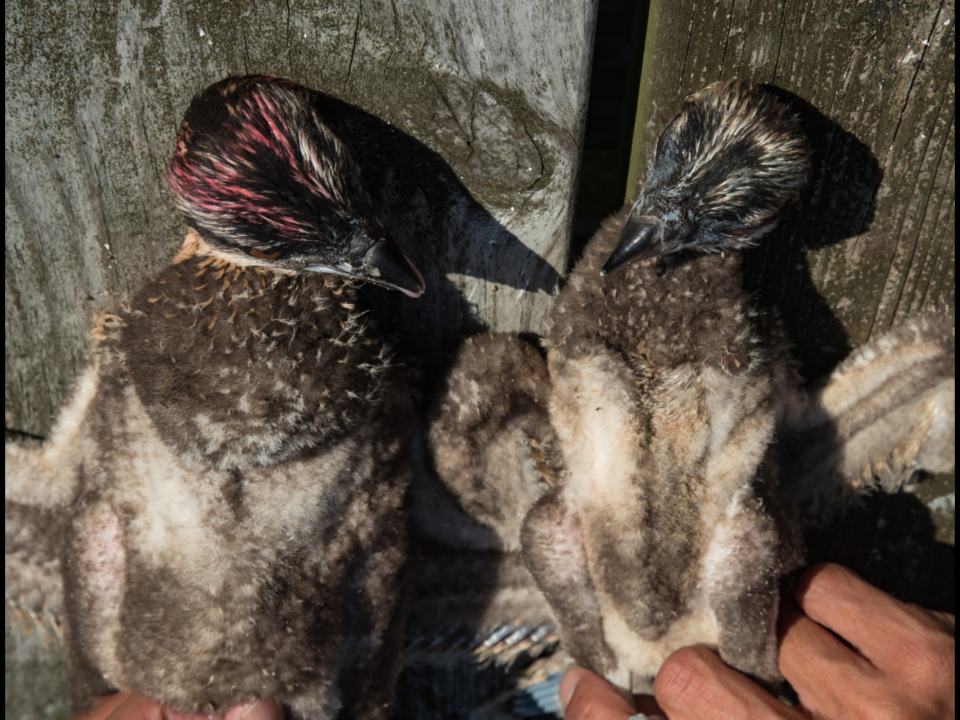2007 Golden-winged Warbler Results
CCB continues work with endangered Red-cockaded Woodpecker
June 15, 2008Red knot stopover ecology on Va's Barrier Islands
June 17, 2008
Written by Michael Wilson
June 16, 2008
The Appalachian Mountains of Virginia have long been considered population strongholds for Golden-winged Warblers (Vermivora chrysoptera) and Appalachian Bewick’s Wrens (Thryomanes bewickii altus). However, both of these species have undergone dramatic population declines in Virginia and throughout the greater Appalachian region including the general belief that Bewick’s Wrens are extirpated from this state. Reasons for the decline of these species may be many, but the most common explanations point to the loss and degradation of early successional breeding habitat. Golden-winged Warblers and Bewick’s Wrens use shrubby, early successional habitats for breeding such as idle vegetated areas, forest clear-cuts, alder swamps, utility right-of-ways (ROWs), and others. Several forces have worked together to cause the recent decline in early successional shrublands including direct losses caused by human development, re-forestation of farmland, fire suppression, and changes in agricultural and forestry practices. In addition, Golden-winged Warblers may be declining because of competition for breeding habitat and hybridization with Blue-winged Warblers. Blue-winged Warblers have been expanding their range eastward and into higher elevations that were once occupied exclusively by Golden-winged Warblers.

Distribution of Golden-winged Warblers, Blue-winged Warblers, and their hybrids in area of overlap in Virginia. Map by the Center for Conservation Biology.
We systematically surveyed for the presence of these three species across 40 counties in Virginia’s Appalachian Plateau, Ridge and Valley, and Blue Ridge physiographic provinces. Surveys consisted of 11-minute point counts aided by the use of recorded species playback. This effort resulted in the survey of 932 points at 863 different shrub patches. We detected 56 Golden-winged Warblers within 34 patches across 12 counties. Highland county supported the overwhelmingly greatest number of Golden-winged Warblers with 28 birds observed in 18 patches. A total of 91 Blue-winged Warblers were detected in 62 different habitat patches across 18 counties. Blue-winged Warblers were detected in all but one county where Golden-winged Warblers occurred. The two species distributions overlapped in elevation but differed somewhat in habitat use. Golden-winged Warbler used idle farm/pastureland and forest clear-cuts at a greater rate than expected by chance and used utility ROWs, shrubby wetlands, and other shrub patches less than expected. Blue-winged Warblers showed the opposite pattern for most of these habitat types. Hybrid warblers were detected infrequently but found within 7 counties. We did not detect any Bewick’s Wrens during surveys.
Comparing our data with historical records indicates that Golden-winged Warblers are continuing to decline in Virginia and are being replaced by Blue-winged Warblers in order of abundance. The overall low number of Golden-winged Warbler detections may provide justification for regulatory protection and highlights the importance for their conservation. Geographical and habitat use patterns of Golden-winged Warblers from this study provide guidance for proactive management.
Related posts
A brood of osprey in Mobjack Bay showing a well-fed chick (left) and an emaciated chick (right). The chick on the right would die the following week due to starvation. Work in Mobjack Bay over a 40+ year period has shown that both reproductive rates and food delivery rates have declined dramatically. The decline in provisioning has led to an increase in brood reduction or chick loss due to starvation. Photo by Bryan Watts.



